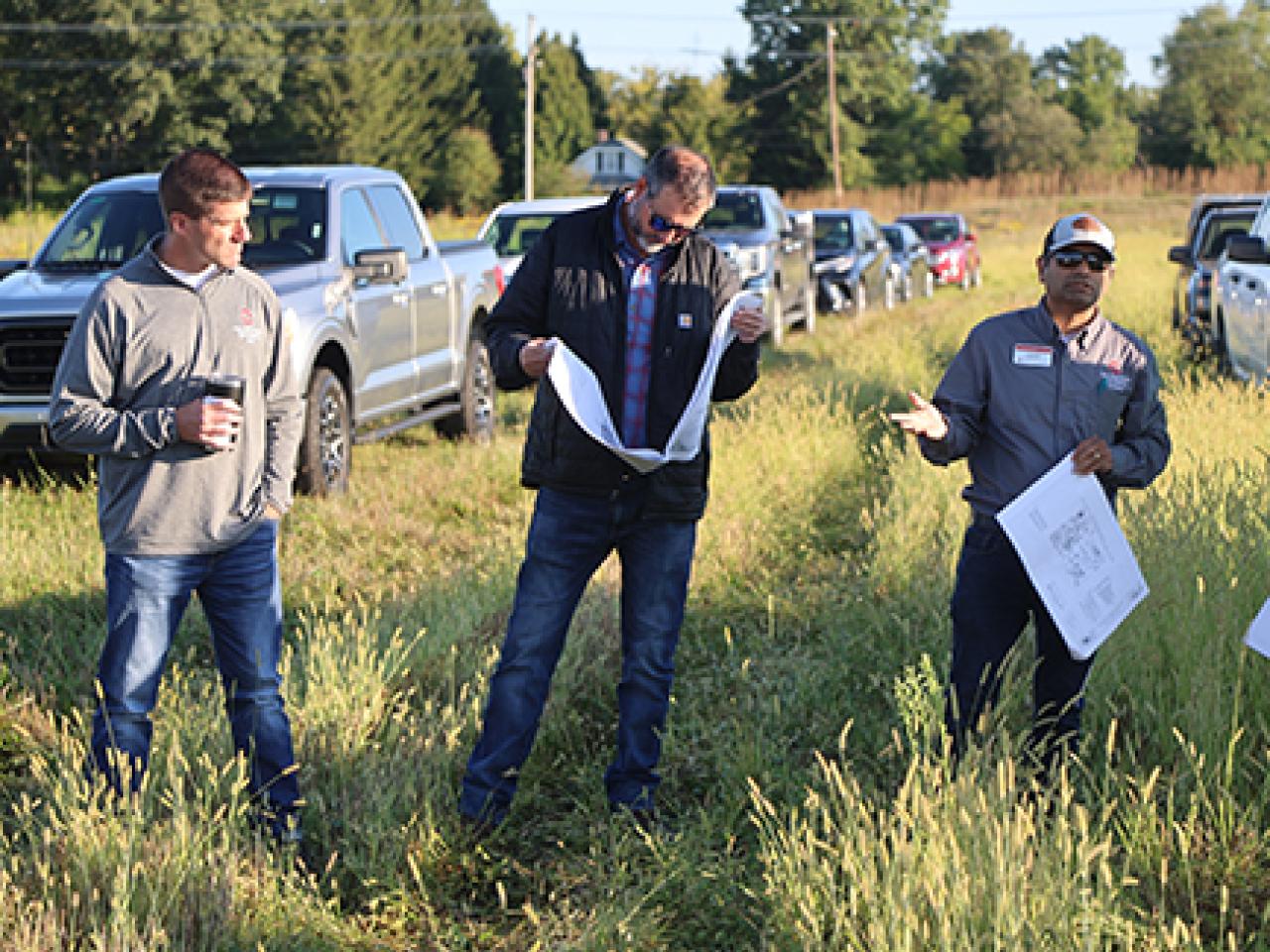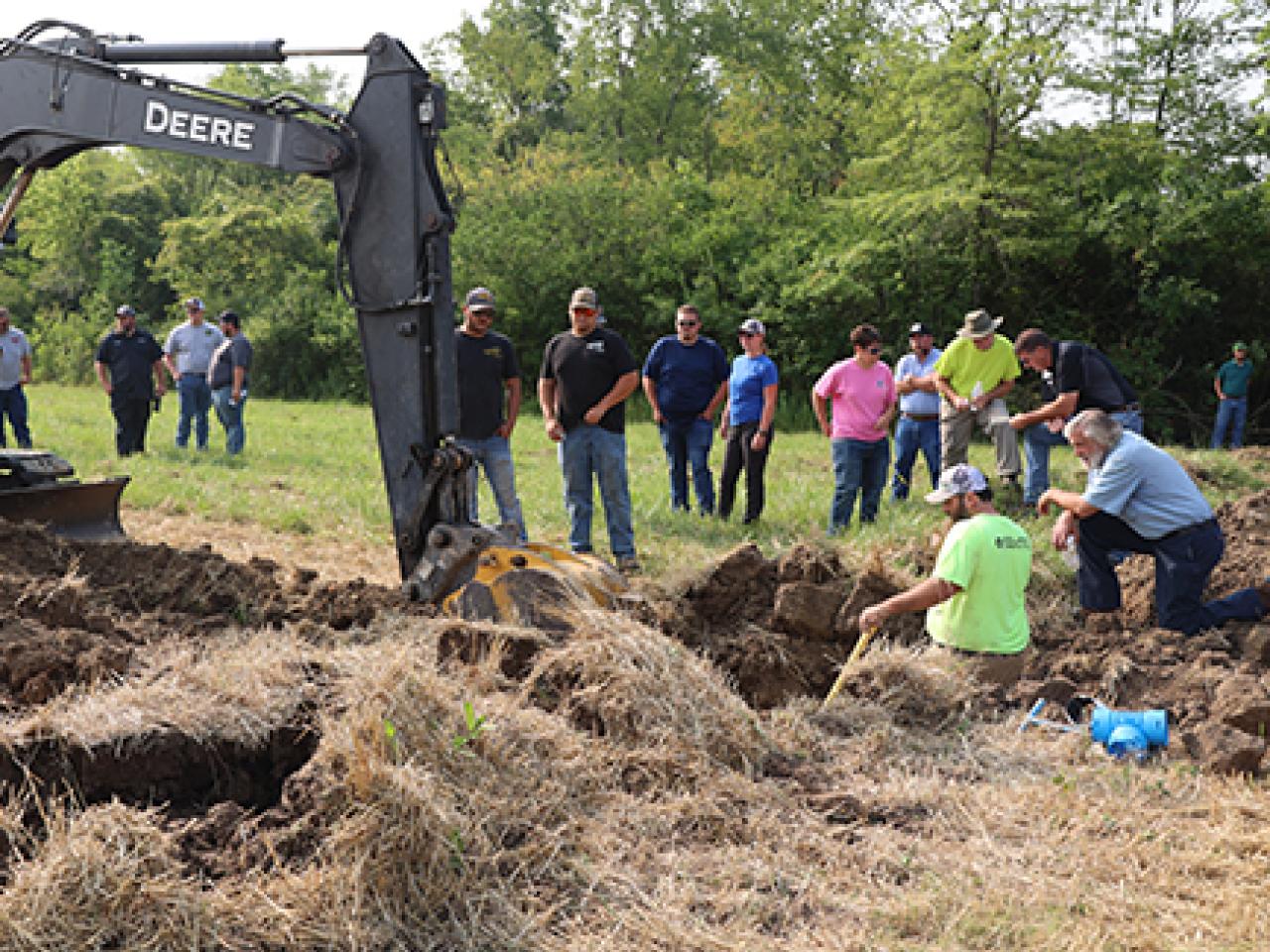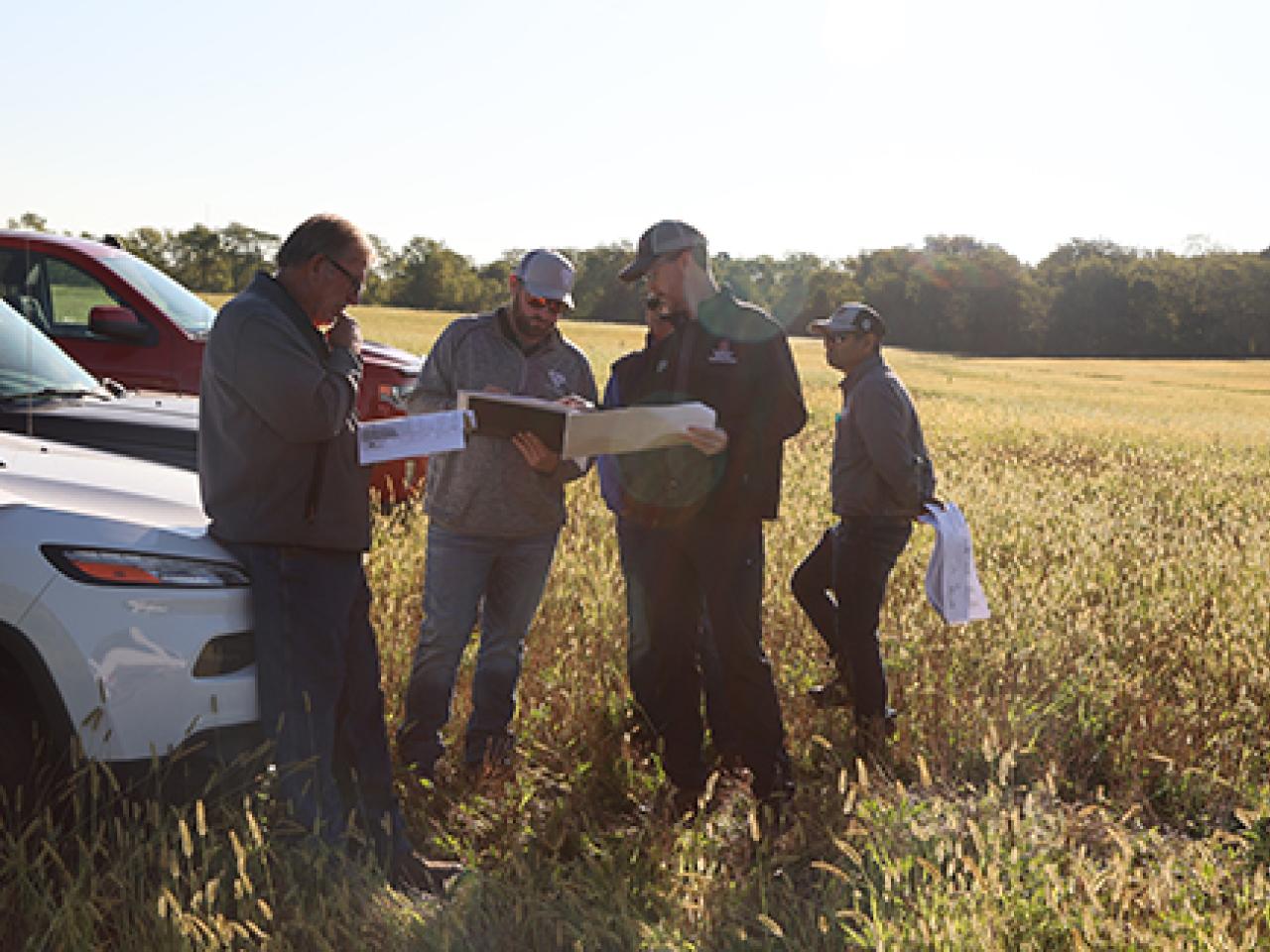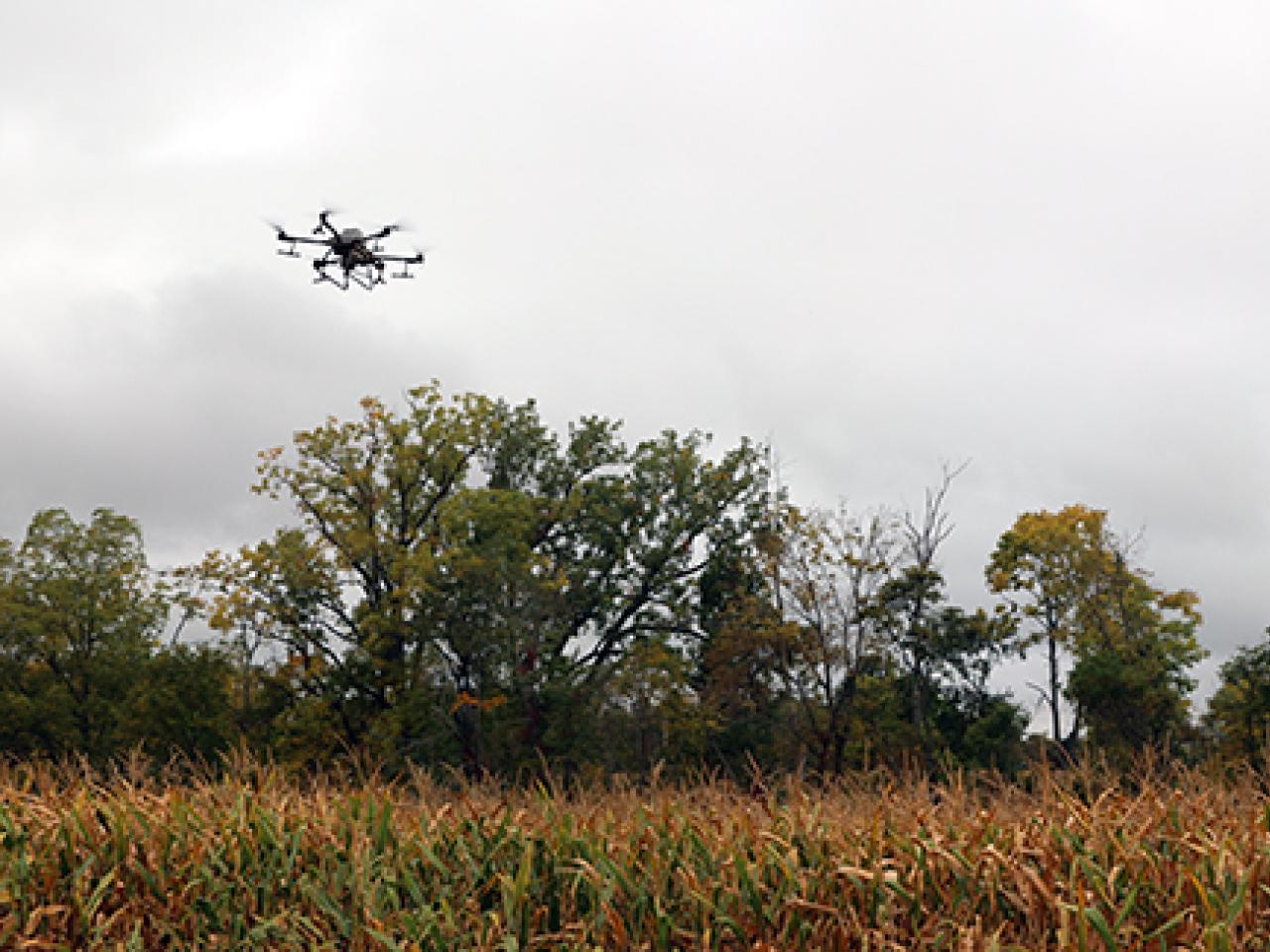
Farm: Looking back to 2023 and flying ahead to 2024
Ohio State Lima's farmer Todd Mason takes a look back at the campus farm for 2023 and shares what he's looking forward to learning in 2024
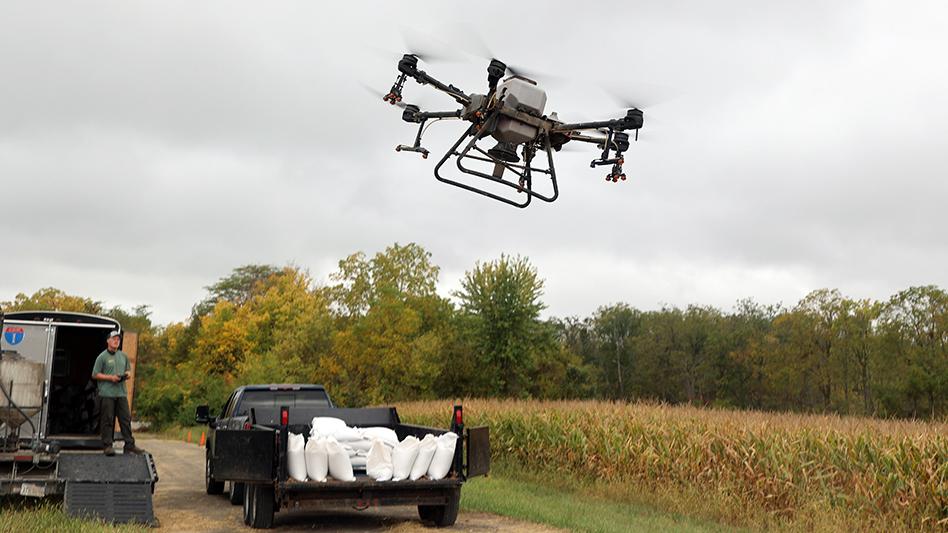
Question
How did the 2023 growing season go on the campus farm?
Answer
Overall, 2023 was a very successful year as we continue to work through the initial stages of establishing a regenerative agriculture farm on the Ohio State Lima campus. Weather was a huge challenge this year; we went 23 consecutive days, an Ohio record, without rain. Later in the year, we saw another two-week period of no rain when the crops were beginning to fill their grain heads. Then, at harvest, we saw a substantial drop in grain prices. Despite all of this, the farm was profitable again.
Question
What has been the most surprising or exciting development?
Answer
We are continuing to find ways to plant cover crops. This year, we hired a drone company to spread rye in standing corn in September. This will allow the rye to get better growth over planting the rye after corn is harvested in the fall. We have test plots to see if there is a difference between drone seeding and drill planting. Results will be known by April 30, 2024. It was also exciting to see the tiling field day in August. 25 acres along Thayer Road were tiled. There was a large crowd of contractors, farmers, and local individuals to witness the project. This will greatly improve the ability for our ground to increase yields to meet the global increased demand.
Question
What are you doing on the farm that you hope others will try?
Answer
One item that is occurring on our farm along Reservoir Road is an irrigation system with a retention pond. I am extremely excited to watch this project. Ohio State University has received a grant from the EPA to study the results of catching water runoff and then using that water for irrigation in the dry summer months. The hope would be to catch water runoff that may carry nutrients. The nutrients are essential in agriculture, but harmful if they flow to larger bodies of water such as Lake Erie. The retention pond is constructed. Hopefully, the irrigation system will be installed this summer.
Question
What are you most looking forward to developing or learning more about in the next farming season?
Answer
What I would like to see improved in agriculture is the number of acres to be no tilled. Obviously, in the case of tiling or field disruption, we need to do tillage. Due to the amount of erosion and runoff of open fields, we need to work on improvement. I think everyone understands the positives of cover crops and regenerative agriculture. We need to continue to work on ways to make regenerative agriculture pay for itself and increase profitability.
Question
What will we see in the fields in 2024?
Answer
In 2024, you will see soybeans on the west side of Biddle Drive and wheat on the east side. If our drone experiment works, the west field should look like a lawn prior to the soybean planting. After the wheat harvest, we will be planting cover crops on the east side of Biddle Drive. In all we will have 94 acres of wheat, 24 acres of corn, 64 acres of soybeans and four acres of hay. All will be included in the regenerative program except for 40 acres of test plots consisting of conventional no till and conventional tillage plots.
Top photo: An aerial drone takes off to plant rye seed in the corn stand along Biddle Drive in September 2023.
Gallery Image

